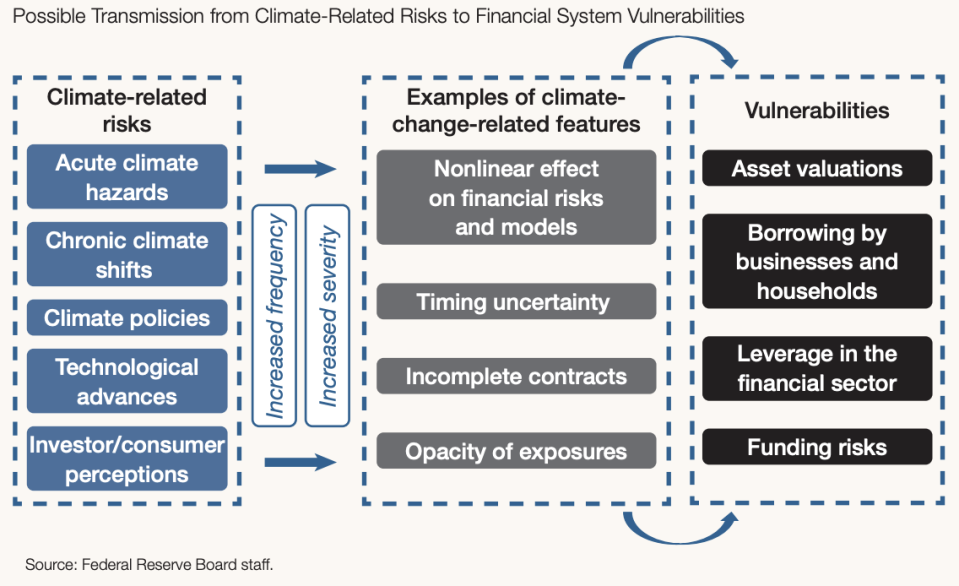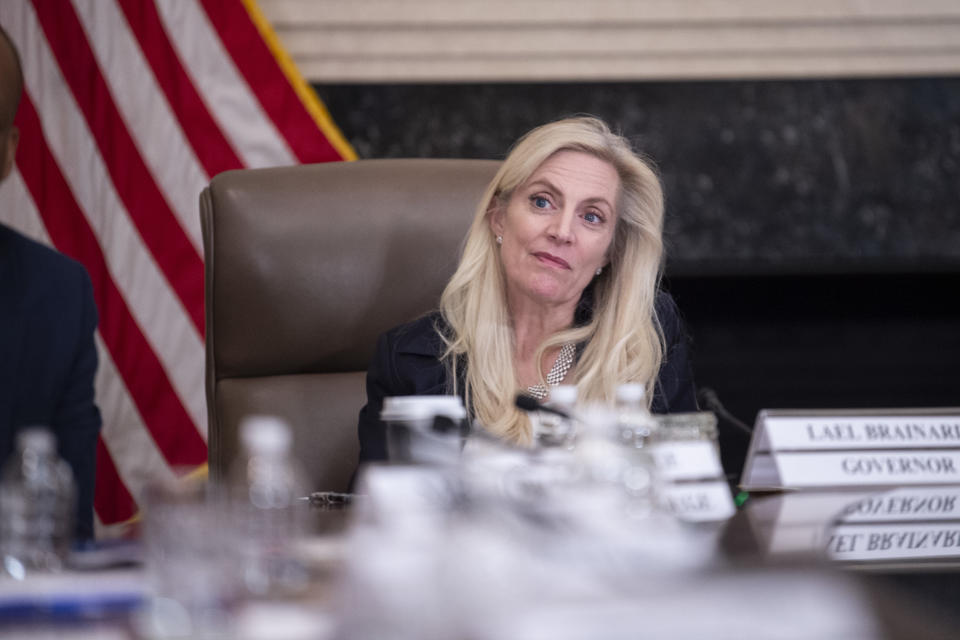Fed calls for more transparency from financial firms on climate risks
The Federal Reserve has added climate change to its list of risks to the financial system, calling on financial firms to improve transparency on how they price climate risks.
The Fed also committed itself to “evaluating and investing” in ways to further explore the impact of severe weather events. In its updated Financial Stability Report, the central bank noted that higher average global temperatures could have serious domino effects.
“Climate change adds a layer of economic uncertainty and risk that we have only begun to incorporate into our analysis of financial stability,” said the report, released Monday afternoon.

The report details ways in which events like storms, floods, and wildfires could lead to instability in financial markets, one example being asset pricing. For example, real estate in areas of rising sea levels may fall sharply in valuation if the frequency and intensity of hurricanes increase. If those assets are not currently priced to those possibilities, a large event could trigger an abrupt reaction that could lead to fire sales. In turn, the volatility could ripple up to real estate loans and mortgage-backed securities - and then the leveraged financial firms that hold them.
The Fed’s formal acknowledgement of climate change risks have been largely spearheaded by Fed Governor Lael Brainard, an Obama-era appointee now rumored to be a top candidate for Treasury Secretary in the Biden administration.

Although critics have argued that climate change is outside of the Fed’s purview, Brainard has countered that financial stability risks should be considered given the risk of impeding the Fed’s ability to achieve its Congressionally-mandated dual goals of price stability and maximum employment.
“It is vitally important to move from the recognition that climate change poses significant financial stability risks to the stage where the quantitative implications of those risks are appropriately assessed and addressed,” Brainard said in a statement Monday.
The Fed did not clarify how it would encourage a “quantitative” analysis of the consequences of climate change.
The Fed’s Financial Stability Report continued to flag elevated asset prices and higher business and household debt. The report added that banks appeared well-capitalized and broker-dealers did not appear too levered, although the Fed noted post-2008 highs in certain measures of leverage among life insurance companies.
The report said in the near-term, COVID-19 remains a risk to the financial system, with U.S. dollar markets and weakness abroad as possible areas of vulnerability.
The Fed releases the report twice a year, in May and November.
Brian Cheung is a reporter covering the Fed, economics, and banking for Yahoo Finance. You can follow him on Twitter @bcheungz.
Powell's odds of Fed chair renomination brighten with President-elect Biden, GOP Senate
Powell: Fed not 'out of ammo' to boost COVID-19 hit economy, can expand balance sheet, liquidity
Fed holds rates at zero amid 'considerable risks,' as economy 'continued to recover'
Less-educated Asian Americans among hardest hit by job losses during pandemic
A glossary of the Federal Reserve's full arsenal of 'bazookas'
Read the latest financial and business news from Yahoo Finance
Follow Yahoo Finance on Twitter, Facebook, Instagram, Flipboard, SmartNews, LinkedIn, YouTube, and reddit.
